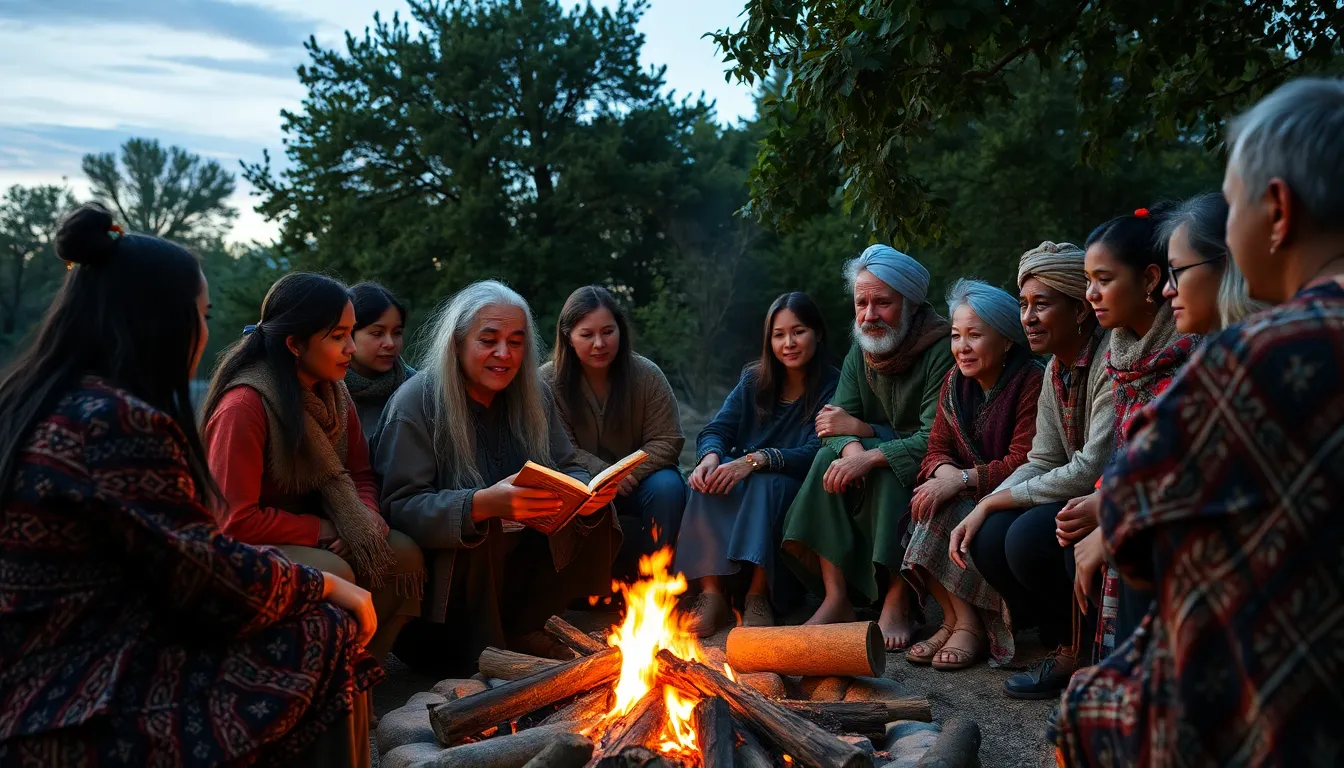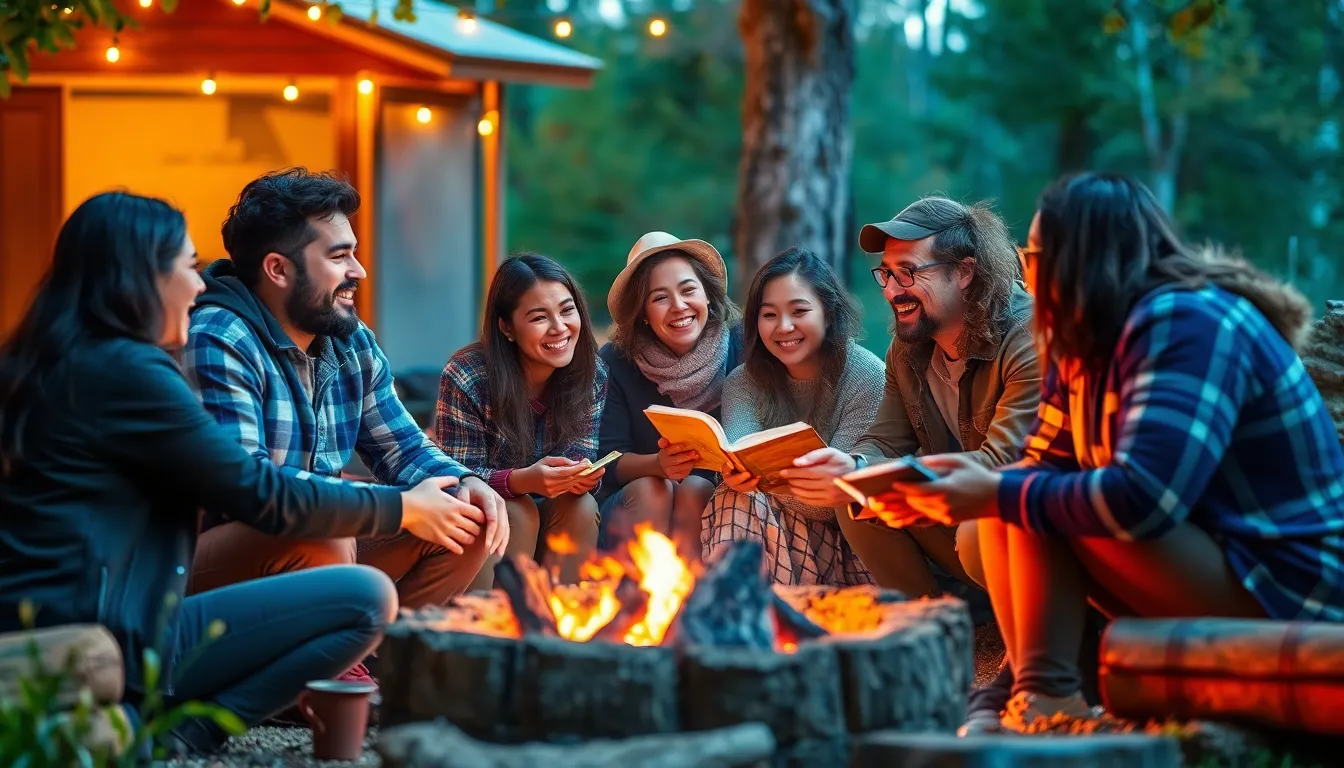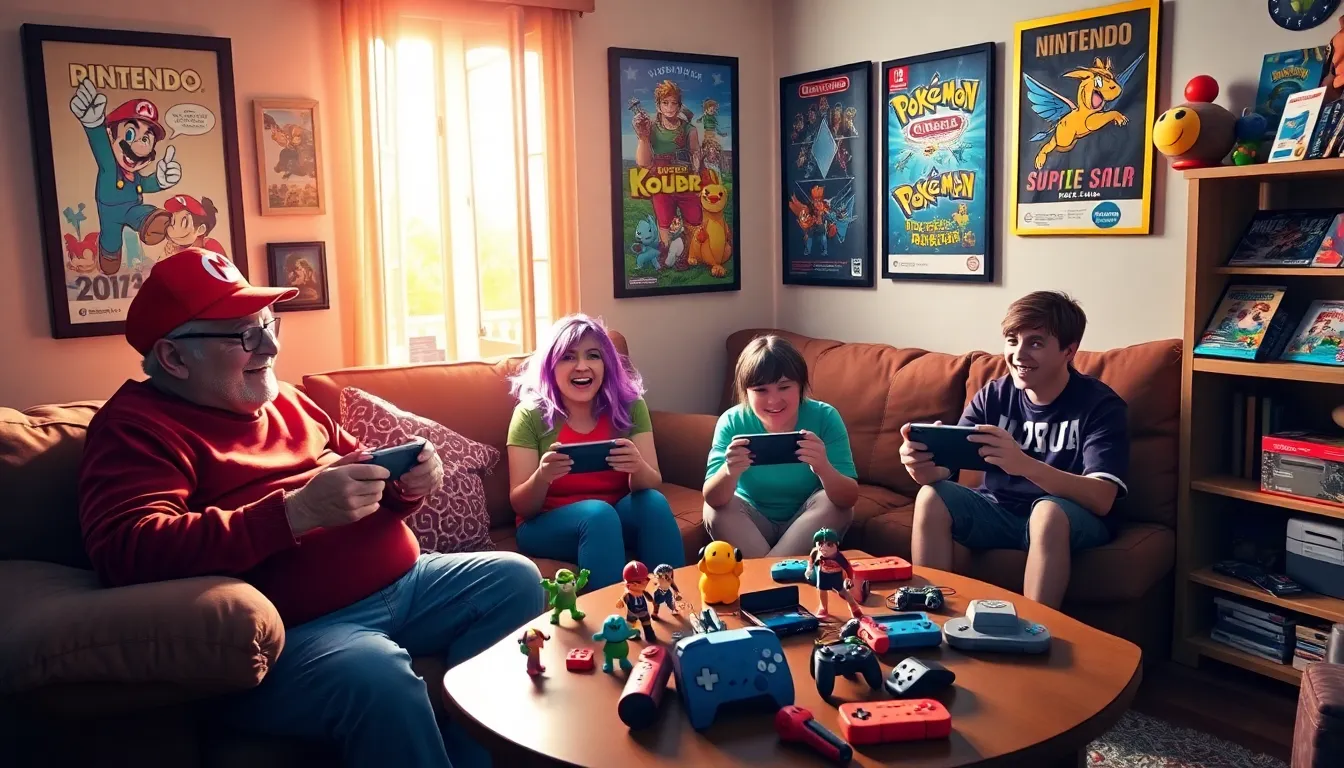In a world buzzing with distractions, ritual storytelling emerges as a timeless art that captivates the imagination. Picture this: a cozy circle of friends, the flicker of candlelight, and a tale that weaves together laughter, lessons, and a sprinkle of magic. It’s not just about sharing stories; it’s about creating connections that transcend time and space.
Table of Contents
ToggleOverview of Ritual Storytelling
Ritual storytelling serves as a powerful means of communication that builds community bonds. Throughout history, cultures have employed storytelling during significant events like weddings, harvests, and rites of passage. Specific narratives often convey moral lessons, cultural values, and shared experiences, creating a collective identity.
Participants engage not just as listeners, but also as active contributors. Each personal story weaves into the communal tapestry, enriching the overall experience. This interplay fosters a sense of belonging and reinforces cultural heritage. Frequently, stories incorporate humor and elements of magic, captivating audiences of all ages.
Significantly, ritual storytelling can transcend geographical and temporal boundaries. Communities worldwide enact similar rituals, demonstrating shared human experiences. Storytelling, therefore, acts as a bridge connecting diverse individuals, enabling them to find common ground through narratives.
In modern contexts, ritual storytelling adapts to suit various formats, from traditional oral tales to contemporary digital platforms. Events such as storytelling festivals and gatherings showcase this evolution, inviting participants to share and listen. Engaging with these stories encourages reflection and deepens interpersonal connections.
Moreover, psychological studies highlight storytelling’s impact on empathy and understanding among listeners. By inviting audiences into different perspectives, these narratives nurture compassion and awareness. Ritual storytelling also empowers individual voices, allowing for personal expression amid collective participation.
Historical Context

Ritual storytelling boasts a rich history that reflects human culture and tradition. Its origins trace back to ancient civilizations where tales were woven into the fabric of daily life, serving crucial functions in societal cohesion and communal identity.
Origins of Ritual Storytelling
Ancient cultures employed ritual storytelling as a means to preserve history and share wisdom. Various indigenous tribes used oral traditions to pass down important knowledge about survival, morality, and community values. The narratives often emerged during ceremonial gatherings, where telling stories held significant meaning. In these contexts, elders narrated events from the past, reinforcing cultural heritage and ensuring that shared experiences transcended generations. As time progressed, various forms adapted and evolved, showcasing the need for communal engagement in storytelling rites.
Cultural Significance
Ritual storytelling plays a vital role in shaping cultural identity across societies. It nurtures a sense of belonging and solidarity among community members. By conveying moral lessons and shared values, these narratives foster understanding of societal norms. Festivals and communal events often showcase storytelling as a celebration of cultural diversity, further enriching social ties. This tradition emphasizes the importance of collective memory, allowing individuals to connect with their ancestors and with one another through time. Each story shared often acts as a bridge, linking past experiences to present realities.
Elements of Ritual Storytelling
Ritual storytelling incorporates specific components that enhance its significance and impact.
Structure and Format
Narratives often follow a clear structure, including a beginning, middle, and end. Each part works together to convey a message or lesson. Participants typically engage in a repeated format, fostering familiarity and participation. Rituals may feature defined roles, inviting both storytellers and listeners to contribute actively. These events usually occur during communal gatherings, such as festivals or ceremonies, strengthening social bonds. By utilizing repetition and rhythm, storytellers captivate their audiences while reinforcing cultural themes.
Themes and Motifs
Common themes often emerge in ritual storytelling, including morality, identity, and community. These narratives frequently reflect cultural values and communicate key lessons. Motifs, such as journeys or transformations, provide relatable anchors for audiences. Events surrounding life milestones—like births, weddings, or deaths—serve as popular backdrops for exploring these themes. Weaving personal experiences into communal stories fosters a sense of shared history among participants. This connection highlights universal human experiences, inviting empathy and deeper understanding.
Modern Applications
Ritual storytelling finds a wide array of modern applications, enriching various fields such as education and therapy.
Ritual Storytelling in Education
Ritual storytelling enhances educational experiences through interactive learning. Students engage actively, absorbing lessons within narratives. Teachers use stories to facilitate critical thinking and empathy, connecting content to real-life situations. Different cultures’ tales allow students to explore diversity and global perspectives. Through communal storytelling sessions, learners foster collaboration and communication, reinforcing teamwork skills. Classroom rituals often incorporate storytelling as a daily or weekly practice, creating a sense of routine and anticipation. Teachers report improved retention and understanding of material, as the stories make abstract concepts more relatable. Overall, this method supports holistic development, merging academic learning with social and emotional growth.
Ritual Storytelling in Therapy
Ritual storytelling plays a vital role in therapeutic settings. Patients often articulate emotions through narratives, enabling deeper self-reflection. Therapists encourage storytelling to help clients process experiences, promoting healing and understanding. Through shared stories, individuals build connections and foster a sense of community, reducing feelings of isolation. Guided storytelling exercises allow clients to reconstruct their narratives, empowering them to reshape their identities. Many therapists incorporate cultural stories, validating diverse backgrounds and enhancing personal relevance. Overall, incorporating storytelling into therapy enriches dialogues, engages clients, and nurtures resilience.
Challenges and Criticisms
Ritual storytelling encounters several challenges and criticisms that merit attention. Critics argue that it sometimes reinforces stereotypes, particularly when narratives exclude diverse perspectives. These limited viewpoints can perpetuate cultural misunderstandings or marginalize certain groups.
Moreover, some individuals perceive ritual storytelling as outdated, questioning its relevance in a rapidly changing world. They contend that digital communication and modern technology overshadow traditional practices. Emphasizing innovation, they suggest that younger generations may favor more interactive forms of media, potentially diminishing engagement with classic storytelling.
Additionally, the risk of cultural appropriation arises when stories from one culture are adopted without respect for their origins. Authenticity suffers when narratives are taken out of context, leading to diluted meanings. Such practices can provoke backlash from communities feeling disrespected or misrepresented.
In educational settings, integrating ritual storytelling faces hurdles as well. Teachers often struggle to find the balance between fostering creativity and adhering to curriculum objectives. The time required for storytelling can conflict with structured lesson plans. This tension creates a challenge in schools aiming for both engagement and educational rigor.
Another challenge includes the varying levels of participant engagement. Some audience members may not connect with certain themes or messages, reducing the intended impact. Effective storytelling requires understanding the audience, which can be unpredictable and depends on individual experiences and backgrounds.
Lastly, measuring the impact of ritual storytelling remains complex. While anecdotal evidence suggests its benefits, scientific studies often lack comprehensive data. This gap in research makes it difficult to quantify storytelling’s effectiveness in fostering connections or imparting lessons. Such challenges call for ongoing dialogue and adaptation to maintain the relevance and integrity of ritual storytelling in contemporary society.
Ritual storytelling remains a vital practice that enriches human connection in a rapidly changing world. Its ability to foster community bonds and convey shared values ensures that it continues to resonate across generations. As individuals gather to share their narratives, they not only preserve cultural heritage but also create an inclusive space for diverse voices.
While challenges exist, the importance of adapting these storytelling traditions to modern contexts cannot be understated. By embracing innovation while honoring the past, ritual storytelling can thrive, nurturing empathy and understanding in an increasingly fragmented society. The stories shared today will shape the collective memory of tomorrow, reinforcing the timeless power of narrative in human experience.






